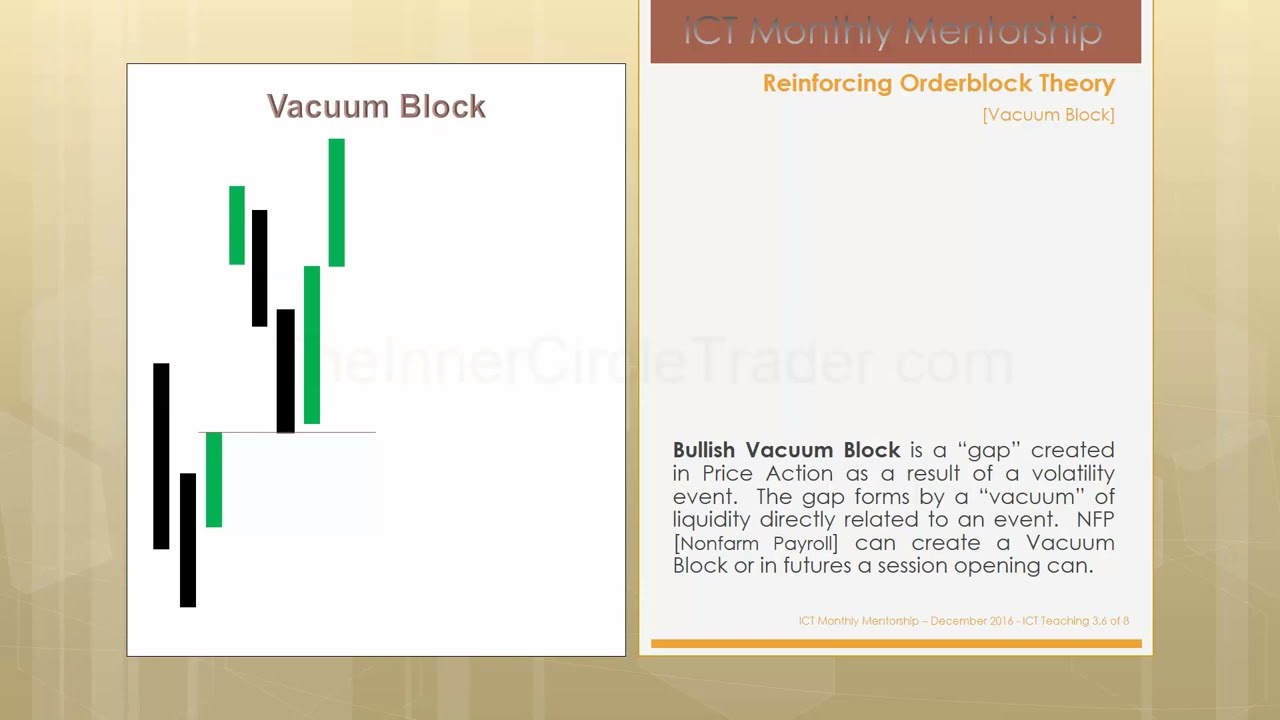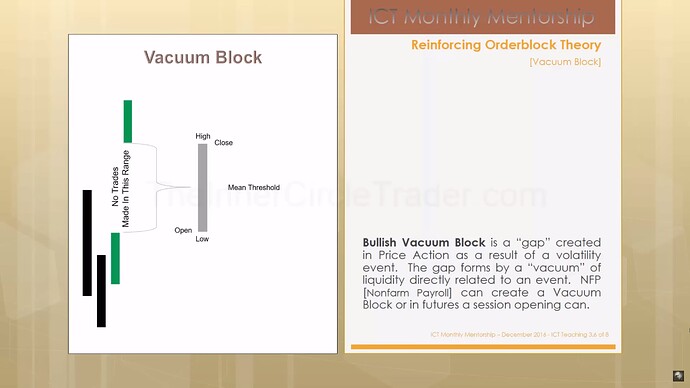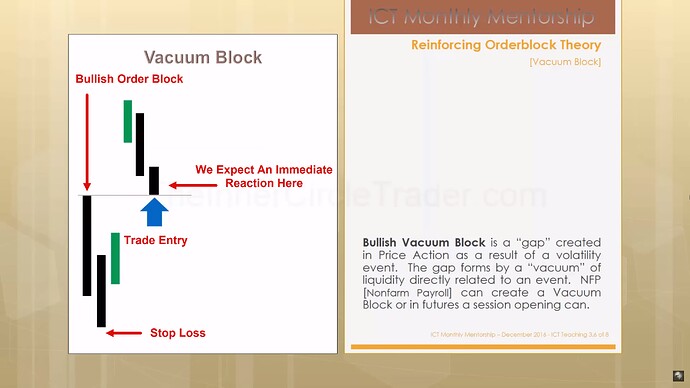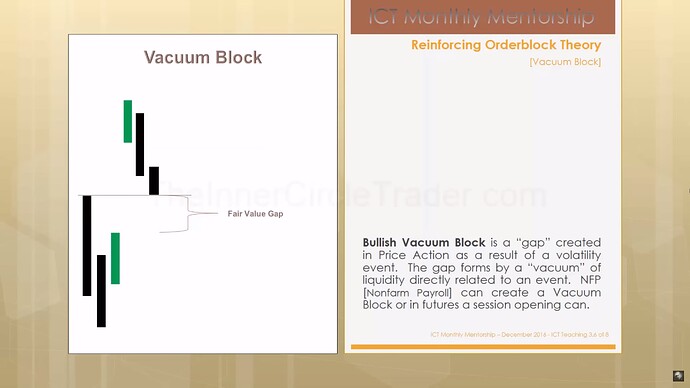Notes
- Vacuum blocks can form during these occasions:
- Terrorist attack.
- Non-farm payrolls.
- Futures open.
- Stock market open.
- FOMC related event.
- Forex market opening on Sunday.
- If you identify a vacuum block in a market that has been trending for some time, it is likely to be an exhaustion gap. Such a vacuum block is considered low probability.
- The exhaustion gap is the last bit of momentum in the underlying trend or direction.
- Best conditions for bullish vacuum block trading:
- An uptrend market makes a correction (retracement) into the discount area.
- A downtrend market is in the discount area, and bullish news has been announced.
- A market is in the discount area and is about to reach the liquidity above.
- Best conditions for bearish vacuum block trading:
- A downtrend market makes a correction (retracement) into the premium area.
- An uptrend market is in the premium area, and bullish news has been announced.
- A market is in the premium area and is about to reach the liquidity below.
- If an order block exists in the area where the vacuum block was created, then we don’t expect the gap to be entirely filled.
- If the time of day permits more trading then it’s likely filling the gap, regardless of the presence of an order block.
- These gaps often appear at 8:30 New York time.
- When we close the gap and see a rally, we never want the price to come back below the level that closed the gap. There is no reason for it. The opposite is true for the bearish scenario.
- A vacuum block is nothing more than a breakaway gap.
ICT Bullish Vacuum Block
ICT Bullish Vacuum Block - Order Block Entry
ICT Bullish Vacuum Block - Fair Value Gap
ICT Bullish Vacuum Block Entry
Next lesson: ICT Mentorship Core Content - Month 4 - Liquidity Voids
Previous lesson: ICT Mentorship Core Content - Month 4 - Propulsion Block




